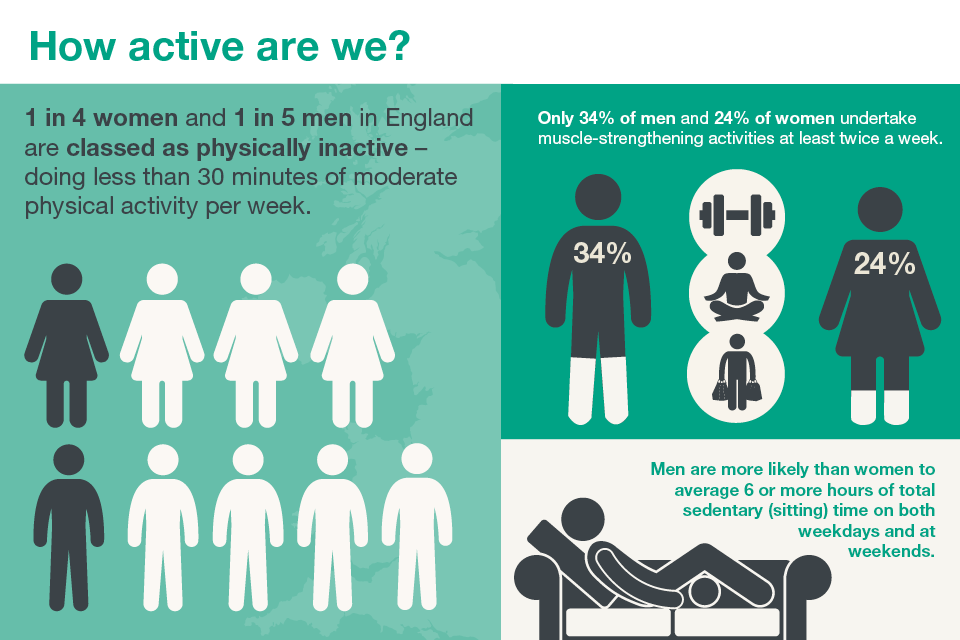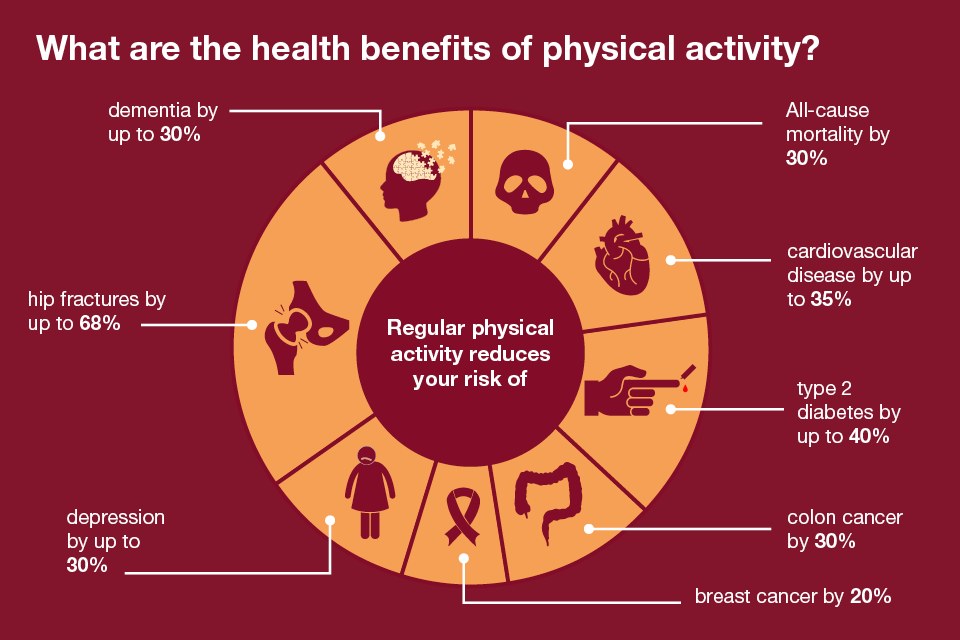Welcome to the latest edition of PHE’s Health Matters, a resource for public health professionals, which brings together important facts, figures and evidence of effective interventions to tackle major public health problems.
This edition focuses on getting every adult active every day by building physical activity into daily routines.
It couldn’t be timelier as next month sees the eyes of the world turn to Rio for the 2016 Olympic Games. Images of the world’s leading athletes competing for gold will be broadcast across the world.
Major sporting events like this can help motivate more people to take part in sport and to start thinking about their own physical activity.
But if medals were handed out to the nations with the highest population levels of physical activity then unfortunately England, and Team GB as a whole, would leave empty handed.
One in four women and one in five men in England are physically inactive, doing less than 30 minutes moderate physical activity a week.
This is well below the recommended 150 minutes of moderate physical activity a week, set out in guidelines from the UK Chief Medical Officers.
The guidelines also recommend muscle strengthening activities twice a week, but only 34% of men and 24% of women are achieving this.
So why are so many adults struggling to be physically active? Many people equate physical activity to sweaty gym sessions, and are put off by this, and do not realise that moderate physical activity can be achieved through everyday life through activities such as:
- brisk walking
- dancing
- cycling
- gardening
As long as the activity causes you to get warmer and breathe harder and for your heart to beat faster then it counts as moderate physical activity.
Any physical activity is better than none. As little as 10 minutes of moderate physical activity at a time provides numerous health benefits.
Physical activity can help to prevent and manage over 20 chronic conditions and diseases, including some cancers, heart disease, type 2 diabetes and depression.
Persuading inactive people to become more active could prevent one in ten cases of stroke and heart disease in the UK and one in six deaths from any cause. In fact it’s often said that if physical activity was a drug it would be classed as a wonder drug.
That’s why the latest strategy from Sport England focuses, for the first time, on encouraging inactive and underrepresented groups to become more active. This is where the greatest individual, community and economic gains can be made.
This edition of Health Matters adopts PHE’s national physical activity framework, Everybody Active Every Day, which identifies four areas for local and national action that can help to get people active.
- Active Society - People are more likely to be active if it is seen as ‘normal’, and if their friends and peers are also active.
- Moving professionals - 1 in 4 patients would be more active if advised by a GP or nurse.
- Active environments - Our homes, workplaces and local environments should be designed to encourage physically active.
- Moving at scale - Positive change needs to happen at every level, in every region and be measurable.
Read the physical activity edition of Health Matters for more on what local authorities and health professionals can do to get the nation active.
Health Matters
Health Matters is a resource for professionals which brings together the latest data and evidence, makes the case for effective public health interventions and highlights tools and resources that can facilitate local or national action. Visit the Health Matters area of GOV.UK or sign up to receive the latest updates through our e-bulletin. If you found this blog helpful, please view other Health Matters blogs.



3 comments
Comment by Gill Kemp posted on
Would love to do more walking but I have IBS which means I need to plan my outings based on toilet locations. Public toilets are now virtually non existent so it's easier to stay home rather than take the risk of an accident [which I've had in the past]. Access to toilets are vital to people who have urgency problems whether these are due to medical conditions, medication, pregnancy, becoming older or a growing bladder and bowel [children]. Enjoying parks for example is for many of us out of the question whatever age we are. There needs to be statutory provision for public toilets - we all need them and 'holding on' can be damaging
Comment by En posted on
Gill - you could provide yourself with facilities for exercise at home. I have a rowing machine, but a static bike or a treadmill would work as well.
Comment by khalid@rowing maching posted on
Anybody who has seen the Boat Race, or Olympic Rowers on TV will know that rowers are among the fittest athletes in any sport. Who wouldn’t want to be in that kind of shape? Whilst that aspiration is not realistic for many of us, whatever level you are coming in at, indoor rowing offers a complete exercise for the majority of the major muscle groups in your body.